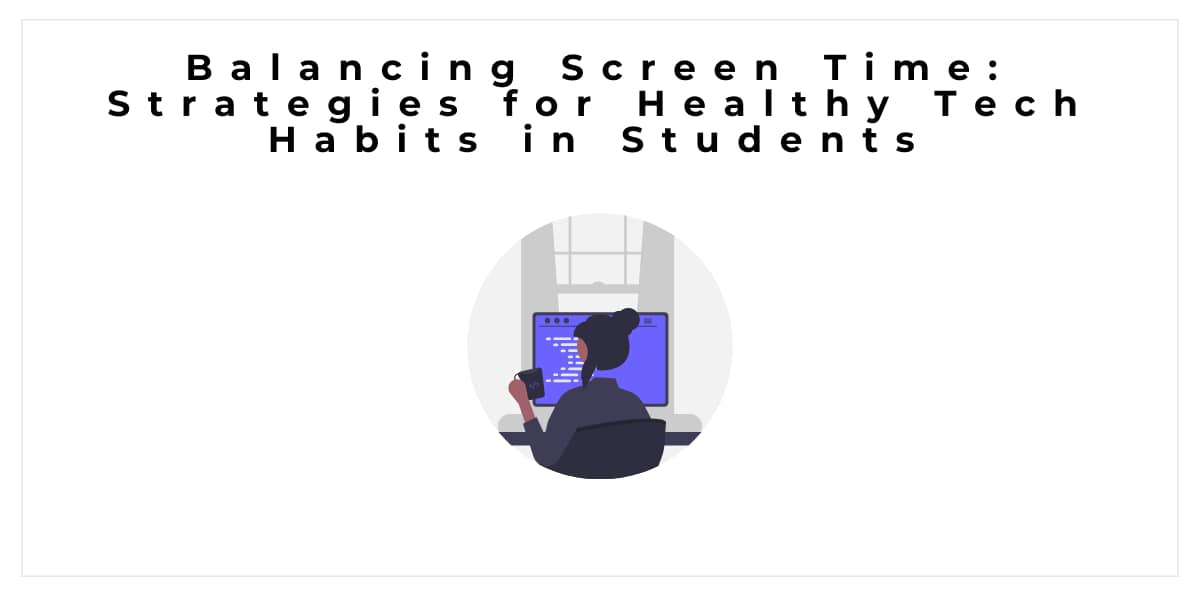The integration of technology into education has brought about numerous benefits. They range from improved access to information to interactive learning experiences. However, the excessive use of screens poses significant challenges to the well-being of students. This article delves into the issues surrounding excessive screen time among students.
It provides practical strategies for promoting a balanced approach to technology use. These strategies will help students ensure they can harness the benefits of technology. Let's not forget about academic performance. Students must recognize that responsible screen time management can extend to their academic pursuits. It's tempting to spend excessive hours online. This is where discipline and balance are crucial, especially in researching colleges or seeking guidance.
Students can allocate dedicated screen time for such activities. They can seek help and advice where needed. They can even consider professional experts to help them write my admission essay needs. In doing so, they guarantee that technology continues to serve as a valuable tool in their educational journey rather than hindering their objectives.
Two Fun Facts
1. Nomophobia is a Real Thing
Nomophobia, short for "no-mobile-phone phobia," is a term used to describe the fear of being without your mobile device or unable to use it. This fear of disconnection highlights how screens have become integral to our lives. This is visible, especially among students.
2. The 20-20-20 Rule
To alleviate eye strain resulting from extended screen usage, you can follow the "20-20-20 rule." This rule suggests taking a 20-second break to gaze at something at least 20 feet away every 20 minutes. It's a fun and easy way to remind students to give their eyes a break during screen-intensive tasks.
The Challenges of Excessive Screen Time
1. Physical Health Concerns
Extended screen time can adversely affect the physical well-being of students, potentially resulting in issues such as eye strain, headaches, and disturbances in sleep patterns. Extended periods of sitting while engaged with screens can also contribute to a sedentary lifestyle. A sedentary lifestyle may increase the risk of obesity and related health issues among students.
2. Mental Health Implications
The adverse effects of excessive screen time on mental health cannot be underestimated. The constant need to stay connected through screens can also lead to addiction-like behaviors. Addiction-like behavior can further exacerbate mental health challenges.
3. Impact on Academic Performance
Although technology can enrich the learning experience, excess screen time can lead to the opposite outcome. Students who allocate less time to non-educational websites, gaming, or social media may need help concentrating on academic studies. Technology can lead to lower grades and ultimately hinder their educational progress.
Strategies for Promoting Balanced Tech Habits
Establishing clear boundaries is crucial to combat excessive screen time effectively. Students should be encouraged to designate specific periods for technology use. These periods are essential both for academic and personal purposes. It can help facilitate better task prioritization and wiser screen time allocation. Additionally, promoting digital literacy is necessary. Students should be equipped with the skills to evaluate online information critically.
They should be able to discern credible sources from misinformation. Students must know how to safeguard their online privacy. Balancing screen time also involves promoting offline activities. Those activities are essential since they enhance physical and mental well-being. Those are engaging in sports, outdoor adventures, and fostering social interactions.
Strategies for Parents
Parents should create designated screen-free zones. These zones would help students disconnect from technology during crucial times. Those are before bedtime or during family meals. Secondly, adults, educators, and parents should model healthy screen time habits. This way, they can demonstrate the value of offline interactions and non-screen-related hobbies. Thirdly, introduce the concept of mindful tech use to students. Mindful tech use can encourage them to reflect on their screen time's impact and purpose.
Additionally, remember it’s important to incorporate tech-free breaks into daily routines. It is essential during extended study sessions to refresh their minds and prevent burnout. Lastly, educate students about the dangers of screen addiction. Emphasize the signs and foster open conversations to ensure they can seek help when needed.
Strategies for School
To further promote healthy tech habits among students, it's vital to strengthen the partnership with parents. Schools should actively engage with parents. This way, they can emphasize the significance of setting screen time limits. Additionally, consider integrating digital detox periods into the school curriculum. Or think of it as part of the home routine. These designated breaks encourage students to disconnect from screens completely. Students can participate in alternative activities that enhance their overall well-being. Alternative activities are essential since they can foster creativity.
Conclusion
Balancing screen time is crucial to promoting students' overall well-being and academic success. While technology offers countless advantages, excessive screen time can lead to physical health issues. It is deeply connected with mental health challenges and academic setbacks.
Educators, parents, and students can work together by implementing the strategies outlined in this article. They can learn to foster healthy tech habits. This can ensure that students harness the benefits of technology without sacrificing health. A balanced approach to screen time is essential for equipping students with the skills and resilience they need to thrive in the digital age.








